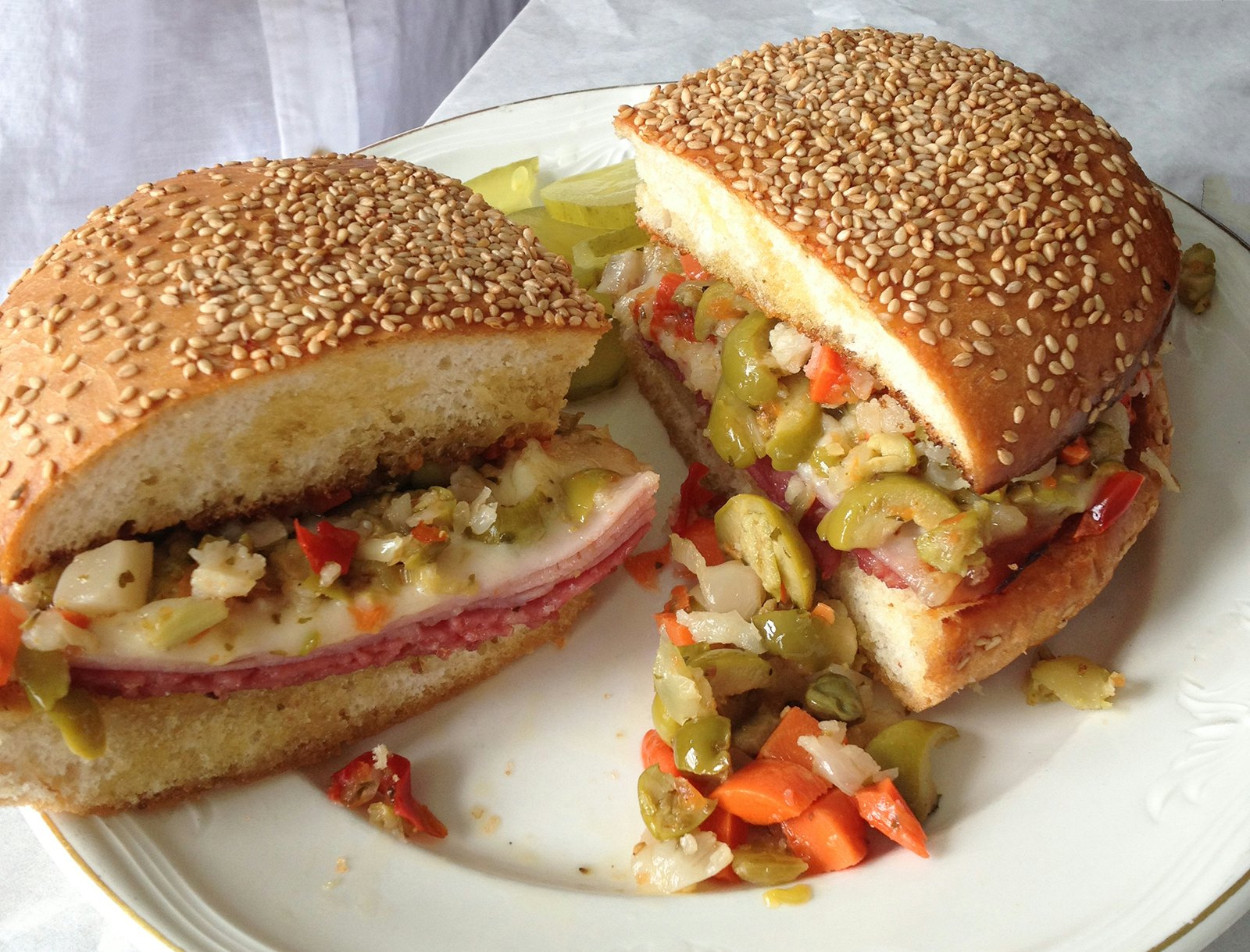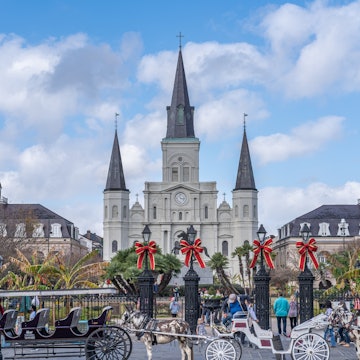

The Hurricane is named for the shape of the glass it is traditionally served in © Paul Broussard / Visit New Orleans
Yes, the food and drink scene in New Orleans is unparalleled, but if you come to the city and consume beignets and Bourbon St (or Sazeracs and Galatoire’s) without context, you’re missing out. From the moment that France’s Duc D’Orleans gave the colony charter to John Law, a smooth-talking Scottish lawyer, the Big Easy has been a hodgepodge of nationalities and influences. Three hundred years of intertwined traditions from France, Spain, the Caribbean, Africa and even Vietnam have resulted in some truly unique cultural and culinary offerings. Intensify the flavor of your present-day adventure by understanding the past.

The birth of cocktail culture, and a Bourbon Street standout
Cocktail culture began in New Orleans, and two drinks in particular come up when the city’s name is mentioned: the Hurricane and the Sazerac. The latter is considered to be America’s first cocktail and dates all the way back to 1838, when apothecary Antoine Peychaud mixed brandy, his signature bitters and sugar in an absinthe-coated glass for the first time. The drinkable concoction caught on quick, and was served in bars around town. It’s gone through a few permutations since then: around 40 years later, brandy was swapped out for rye whiskey, and about 40 years after that, herbsaint (an anise-flavored liquor created in New Orleans) took the place of then-outlawed absinthe. Today, you can order a Sazerac in just about any New Orleans bar, but the most classic place to get one is the elegant, wood-paneled Sazerac Bar in the Roosevelt Hotel. Yes, you’ll pay more here, but the art deco atmosphere is worth it.

The Hurricane has a very different origin – and absolutely nothing to do with weather. In the decade or so after World War II, whiskey and scotch were hard to come by. Liquor importers did have lots and lots of rum, so bartenders had to get creative when it came to using it. Legend has it that the Hurricane was first served up at Pat O’Brien’s on Bourbon St, in the late 1940s. The original recipe called for rum, lemon juice and passion fruit juice, which gave the drink its signature red color. The drink took its name from the distinctive shape of the glass it was served in, which mimicked the shade of a hurricane lamp. You can still get a Hurricane from Pat O’Brien’s, which serves up hundreds of the frosty, candy apple-red drinks to tourists every day. These days odds are that it will come premixed from a machine and served in a clear ‘go cup’ – but when you’re paying $4 for a stiff drink, it’s hard to complain about presentation.

From the muffuletta to the banh mi
In the late 1800s, more Italian immigrants were moving to New Orleans than any other city (yes, that includes New York City). Among them was Salvatore Lupo, a Sicilian who owned Central Grocery. Lupo would see Italian working men come in and order meat, olives, anchovies and cheese for lunch. The large plates were hard to eat on the go, so one fateful day in 1906, Lupo decided to combine them in a sandwich of meat, cheese and an olive/anchovy tapenade, served on a sesame seed-studded bun, which came to be known as the muffuletta. The rest is salty, satisfying, finger-licking history. Generations of New Orleanians have scarfed down these signature sandwiches; many visitors make a special effort to fly home with them and swear they taste even better the next day. Get yours at Central Grocery or at Napoleon House for an extra dose of New Orleans history – this venerable French Quarter stop has been around since 1805.
Nearly 100 years later, another group of immigrants brought another iconic sandwich to New Orleans. After the Vietnam War, many refugees were resettled in New Orleans thanks to Catholic relief organizations. They took their food with them of course, and the bahn mi in particular has been embraced by New Orleans. In fact, these often spicy sandwiches, comprised of pork, creamy pate, crisp cucumber and cilantro on French bread are nicknamed ‘Vietnamese po’ boys,’ after the Louisiana po’ boy sandwich they are so similar to. Try one at Dong Phuong Oriental Bakery in New Orleans East – if you go on a Saturday, the Vietnamese Farmers’ Market is nearby. Predominantly Vietnamese American vendors sell veggies, poultry and a few Vietnamese prepared foods, but you have to be an early bird to catch this worm: the action starts winding down by mid-morning.

Culture in a bowl
The phrase ‘melting pot’ is overused, but there’s no better way to describe the classic Louisiana dish of gumbo. The name comes from a West African word for okra, a vegetable common to the South that is a staple gumbo ingredient, but this rich, spicy stew is made with a roux base inspired by French cuisine and seasoned with sassafras, a staple of Choctaw diets. The first recorded gumbo recipe dates to 1802, though it’s likely the dish was around long before that. Meats used can vary from duck to chicken to smoked sausage or even seafood, but a gumbo is always served over rice and always includes the so-called ‘Holy Trinity’ of vegetables from Louisiana cuisine: celery, bell peppers and onion. Try it at the Commander’s Palace, a sprawling Garden District standout that has been serving top-notch Creole cuisine since 1880 – the gumbo ingredients vary by day, but the velvety broth is always laced with rum barrel hot sauce.
Trisha Ping traveled to New Orleans with support from Visit New Orleans. Lonely Planet contributors do not accept freebies in exchange for positive coverage.
















